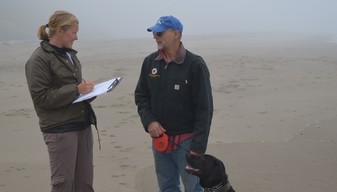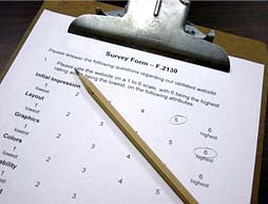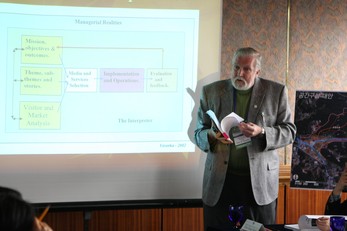John Veverka & Associates
Main menu:
- Home Page
- Our Range of Services
- Interpretive Coaching
- Interpretive Planning
- Interpretive Plan Outline
- Interpretive Training
- John Veverka Resume
- NEW Advanced Interp. Text Book
- InterpNEWS
- Library
- JVA NEWS, Courses and Updates
- Certificates
- Planning/Design of Interpretive Panels
- Interpretive Writing
- Interpretive Writing Course
- Interpretive Trails Course
- Interpretive Panels Course
- Introduction to Heritage Interpretation Course
- Interpretive Planning & Design of Marketing Brochures Course
- Training for Interp. Trainers
- Interpretive Exhibits Course
- Interpretive Master Planning Course
- Interpretive Planning for Scenic Byways.
- Critiquing and Coaching Interpretive Staff
- Advanced Interpretive Planning
- Interpretive Training Center Course Catalogue
- Interp. for International Visitors course.
- Interpretive Exhibits Evaluation
- Interp. Center Feasibility Analysis Course.
- Interp. for Commercial Tour Providers
- Interpretive Researchers Guide for Visitor Studies
- Interp. Planning for Historic Homes
- Heritage Interpretation Training Center
- Interpretive Planning for Botanical Gardens
- An introduction to planning and presenting live interpretive programs and tours for Museum/Heritage Site Docents and Volunteers.
- Developing Marketing Plans for Heritage & Tourism Sites and Attractions
- Interpretation Book Store
- Heritage Interpretation Resource Center
- Interpretive Planning for Historic Farms
- Developing Successful Partnerships
- Developing Interpretive Outreach Programs
- Community Interpretation Planning
- Interpreting Gravestones and Historic Cemeteries
- Using Interpretation to Accomplish Management Objectives.
- An Interpreters Guide for Survival Economics.
- Innovative Strategies for Interpretive Media and Services Planning.
- A Curators Guide for Developing Gallery Tours.
- Advanced Interpretive Writing - Technical Publications
- Advanced Interpretive Services for Managers, Supervisors, Team Leaders and Sr. Staff.
- Advanced Interpretation for Chiefs of Interp. - Interpretive Managers - Regional Interp. Specialists
- Interpreting Critical Issues.
- Developing Commercial Interpretation for Resorts, Cruise Ships, Campgrounds and Tourism Attractions.
- Planning and developing a new commercial tour guiding business.
- Interpretive Evaluation, Visitor Studies and Site Assessment Center
- The Center for Interpretive Planning Advancement & Excellence.
- Developing Requests for Proposals (RFPs)
- Planning and Facilitating Focus Workshops
- Planning for Interpretive Experiences
- 40 Years a Heritage Interpreter
- Interpretive Techniques - The Rest of the Story Course
- Certified Professional Interpretive Planner Certificate
- Certified Professional Interpretive Program
- Certified Professional Interpretive Writer certificate program.
- Visitor motives for attending interpretive programs.
- Exhibit Rehab Course
- Developing Training Workbooks & Manuals
- Planning for Railroad Museums and Sites.
- Climate Change Interpretation Course.
- When there's nothing left but the story - interp. storytelling.
- Interpreting Legends Myths and Fables
- InterpSHARE - Seminars 2022
- Interpreting Invasive Species
- Interpretiing Edible Insects
- Interpretaive Planning for Climate Change
- HITC Climate Crisis Resource Center
- PUP Members Only
- Starting a new Interp Consulting Business
- Panels 4 Week Course
- Interpretive Writing - 4 Week Course
- Marketing - 4 Week Course
- Intro to Interpretation - 4 Week Course
- Interp Climate Change - 4 Week Course
- Exhibit Rehab 4-Week Course
- Level 1
- Johns Interpreters Blog
- John Interpreters Blog 2
Interpretive Researchers Guide for Visitor Studies
An Interpretive Researchers Guide for Developing
Visitor Surveys and Questionnaire/Interview Designs
For Natural & Cultural Heritage Sites and Attractions.
Ten Units - 2.5 CEU Credits.
Tuition - $250.00

This is our newest advanced interpretation course - designed as an entry level training course in developing visitor surveys and questionnaires. While most agencies do or want to do visitor studies, many don't have advanced training in interpretive research to develop, conduct and create scientifically valid studies and survey instruments. This course will provide you with survey research techniques, strategies, survey instrument samples, and e-LIVE coaching to help you develop your visitor survey instruments and strategies as a course product.
Course Instructor:
Prof. John Veverka
- B.S and M.S in Heritage Interpretation - The Ohio State University
- Ph.D. program in Interpretation at Michigan State University.
- Research emphasis - Visitor Motivations for Selecting and Attending Interpretive Programs.
- Adjunct Professor Heritage Interpretation (summer heritage tourism institutes) North
Carolina State University, New York State University.
- NAI Certified Interpretive Planner and Trainer
- NAI Fellow
- Certified Professional Heritage Interpreter (Canada).
- Author of several interpretive planning/training college text books.
- Publisher of InterpNEWS - the International Heritage Interpretation e-Magazine.
- 40 years of interpretive planning, training and visitor studies experience.
The Course Units
Unit One - Planning your evaluation project. What do you want to (need to) know, why do
you need to know it, and how do you intend to use the information from the
research? Do you have a hypothesis you are testing?
Unit Two - Collecting demographic data.
- Geographic data: zip codes, counties, cities, states, other geographical data
- Genders
- Age groups
- How you can use this information for program/services and marketing.
- How to present this survey block on a survey instrument.
- What demographic data can tell you.
Unit Three - Developing an Observational Survey program and recording instrument.
- Visitor flows.
- Viewing times
- Parking lot surveys (who is getting out of the cars - age groups, family units, etc.)
- License plate survey (Counties).
- Behavior sampling methods.
- Validity and observational bias.
Unit Four - Conducting Interviews.
- Interview questions and design.
- Random sampling techniques (random numbers table).
- Random sampling biases.
- Interview locations.
- Engaging the potential interviewee
- Interview length
- Pre and post visit interviews.
- Interview recording instruments.
Unit Five - Developing your survey instruments/questionnaires.
- What do you want to know and how will you use the information collected?
- Developing survey questions.
- Writing open-ended questions.
- Analysis of responses from open-ended survey questions.
- Using Likert Scales (rate on a scale of 1 to 10...) on questionnaires.
- Using rating or preference check (pick your top three program topic preferences from this list
of 10).
- Placement of demographic data collection.
Unit Six - Survey strategy - when, where and to who will you ask to compete your
questionnaire?
- Determining the number of questionnaires needed for drawing valid conclusions.
- Developing your sampling strategy.
* Where will you ask visitors to complete your questionnaire?
* What tools will you need (clipboard, pens, seating, etc.)?
* How long should it take to complete your questionnaire?
* What times/days will you do the sampling?
* Using a Random Numbers table to help eliminate survey strategy biases.
* Understanding the problems of "bias" in survey research.
Unit Seven - Pretesting your interview, questionnaire sampling strategy and instruments.
Pre-testing your visitor survey sampling process, locations and instruments will help point out any problems in doing the interviews or asking people to complete your questionnaire. It will also point out any "bad" or confusing questions where you think a question means one thing and the visitors think it refers to something else.
Unit Eight - Let's look at the results and develop our Dichotomies. This means that we want to see how our survey results may differ between different age groups, or between men and women, or between people for different regions or urban vs. rural visitors, etc. The validity of this is part of the sample size of our survey which is why we think about this early on when planning the studies.
Unit Nine - Presenting your data - graphs, charts and tables, and presenting your results.
Unit Ten - You have your visitor survey results - now what?
For our e-LIVE courses, all assignments from each unit will be sent to Prof. Veverka for reveiw and comments or coaching. You can talk with John whenever you need to by phone, SKYPE, or e-mail. John will be YOUR personal coach for this course and will be happy to help with your visitor studies research projects.
When will the course start? You can start this course at any time and work at your own pace. It is estimated that it will take about 25 hours to complete this course. The cost of the 25 hours of training is $250.00 USD, which can be paid for by credit card or PayPal via the Pay Now button below.
If you're interested in this course and would like to enroll in it - send an e-mail to John at: jvainterp@aol.com for a registration form. If you have any questions at all feel free to ask. Then return to this page to pay for the course tuition.
Prof. John Veverka
JVA Heritage Interpretation International Training Center
Interpretive Training Division
jvainterp@aol.com
SKYPE: jvainterp